There are two classifications of stainless steel: the "300 series" and the "400 series". The 300 series contains nickel and the 400 series is usually known as "nickel-free". Nickel-free stainless steel is predominantly used in surgical and medical applications. So, overall, there is no doubt that nickel-free stainless steel is safer than 304-grade options.
Made with 100% Nickel-Free Thick Stainless Steel from Nippon Steel Corp JAPAN with ZERO harmful chemicals or coatings, the Meyer Nickel-Free Stainless Steel cookware is completely safe for your cooking. The cookware has no PTFE, PFOA or BPA that might leach into your food.
- Difference between Stainless Steel & other cookware:
- Advantages of Stainless Steel cookware:
- FAQs
- Conclusion
1. Difference between Stainless Steel & other cookware:
Stainless steel Vs nonstick cookware:
Non-stick coating carries some potential risks. The chemicals used to make many of the nonstick coatings on the market, such as PTFE (most commonly known as Teflon) pose a health hazard for people. Exposing nonstick pans to very high temperatures can release potentially toxic chemicals into the air.
- Uncoated Stainless Steel is a more eco-friendly option in that manner.
- Stainless Steel gives you relief from the annoying problems of chipping associated with nonstick.
- They’re more durable since there’s no coating that needs to be protected.
Stainless Steel Vs Cast Iron Cookware:
- Stainless steel heats up faster and more evenly. Cast iron takes longer to heat up but retains heat for longer.
- Stainless steel is not as heavy as an equivalent cast iron implement because it is an alloy of lighter metals.
- Stainless steel is more durable than cast iron because it is not as brittle and rustproof.
- While cast iron cookware is reactive with acidic foods like tomatoes, stainless steel is not reactive at all.
- Cast iron tends to rust if you expose it to water, however, stainless steel is easy to maintain.
Stainless Steel Vs Ceramic Cookware:
Cooking in ceramic cookware on high heat or an accidental fall on the kitchen floor can bring an end to it. Compared to ceramic, stainless steel is more durable and sturdy and can last for many years.
There is a greater risk of food sticking to the surface of stainless steel as compared to ceramic-coated cookware when cooking.
2. Advantages of Stainless Steel cookware:
| High durability |
Stainless steel cookware is highly durable and sturdy since they are made up of a combination of metals. You don’t have to worry about them accidentally falling from your hands or rusting or chipping.
|
| Great cooking advantages |
Food can be cooked perfectly in stainless steel cookware because it distributes heat equally, ensuring that your food is cooked perfectly.
|
| Low maintenance |
Stainless steel cookware is low on maintenance. Since these do not break easily, they can be cleaned easily. Also simple but regular cleaning will make it last for generations
|
| Easy cleanup |
You can clean them easily. Like ceramic cookware, these have a smooth surface. You do not need to pay any unnecessary amount of effort to maintain these. Most stainless steel cookware is also dishwasher safe.
|
| Non-reactive with food |
Unlike Teflon, which comes with a chemical coating, food cooked in stainless steel cookware is extremely safe and hygienic. It is perfect for cooking acidic recipes like tomato sauce without worrying about the risk of contamination.
|
3. Before you go, here are some frequently asked questions about ceramic cookware. We hope this will help you resolve all confusion:
Food sticking to the pan:
It is quite normal for food to stick on a Stainless Steel pan since it is uncoated & food is in contact with the bare metal surface. Season your Stainless Steel pan to make it perform like a Non-Stick pan. We recommend using an adequate amount of oil when cooking in your Stainless Steel pan to avoid food from sticking to your pan
Stainless Steel pan has Corrosion / Black Spots / Pitting in it:
The presence of undissolved salt in a pan, mixed either with cold water or left after boil drying, can cause corrosion or pitting in a pan. Therefore, it is recommended that you add salt only after the water has reached its boiling point.
Stainless Steel pan has a heat tint / bluish or reddish marks/discoloration in it
Heat tint is caused when you heat the pan to a high degree and don’t let it cool properly before washing it. The thick oxidized layer of chromium and air (oxygen) forms a protective layer which is also called the “Rainbow Effect”
Steps to clean:
- Pour vinegar enough to cover the bottom of the cookware.
- Wait for a couple of minutes, rub the affected area with a soft sponge and rinse it thoroughly.
- Wipe with a dry cloth/tissue/paper towel.
My pan has white patches on it:
The white patches on Stainless Steel cookware are formed due to the deposition of minerals like calcium which are present in the water. This is just an issue with the quality of water being used to clean the pot/pan. You can remove them by boiling a solution of 1 part vinegar to 3 parts water. Let it cool completely, then wash and dry the pan as usual.
My pan warped / My pan’s shape has changed:
When a pan is continuously heated or cooled rapidly, some parts of the pan expand or contract faster than other parts, and the stress that this uneven expansion and contraction puts on the pan causes it to warp. It can occur due to many reasons:
1. Rinsing hot pans with cold water
2. Overheating/ Dry Heating
3. Pan is too big for the burner
4. Conclusion:
Please ensure that there are no rapid temperature variations while using the cookware. Always cook on low-to-medium flame, allow the cookware to cool down before rinsing underwater, and use a burner appropriate for the size of your cookware.
Explore complete Stainless Steel Range here

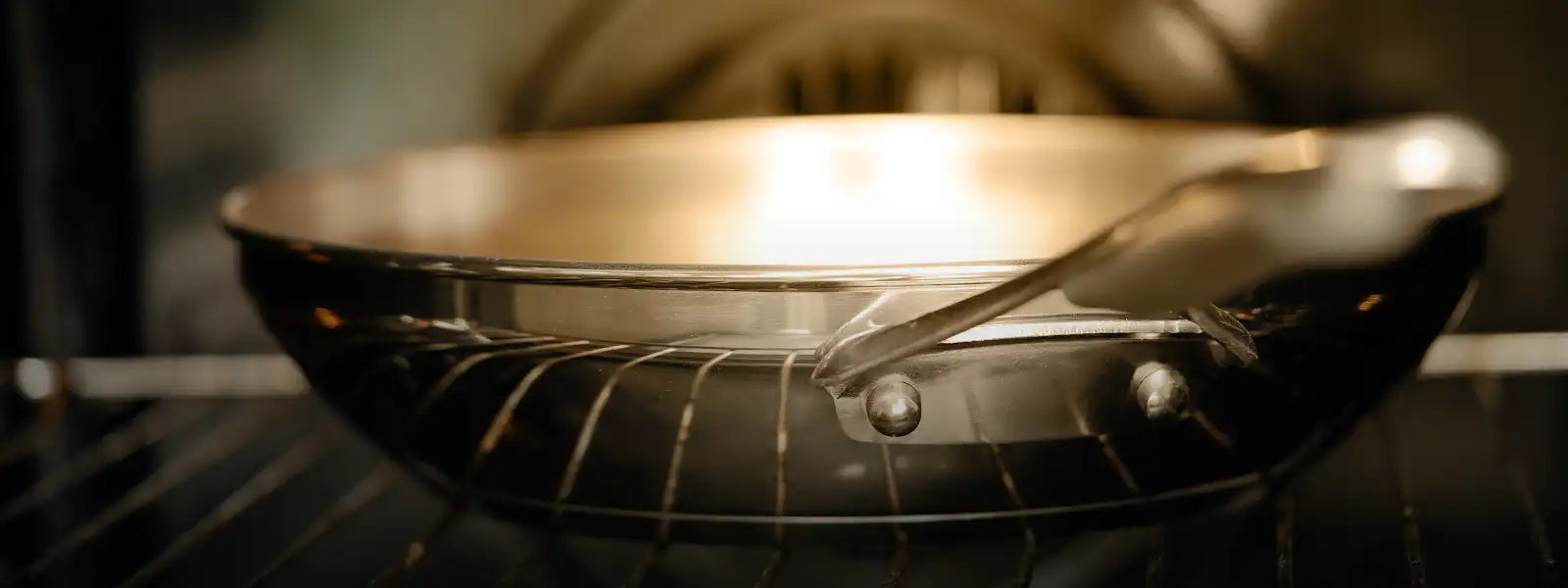
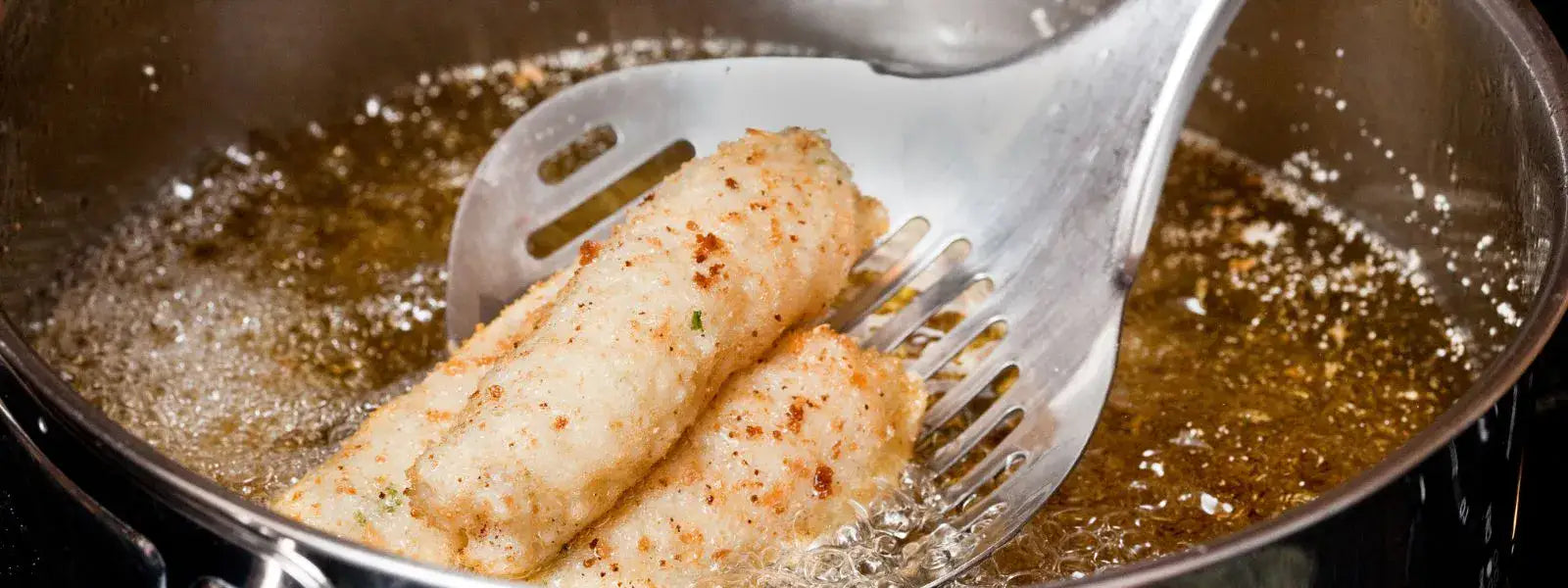
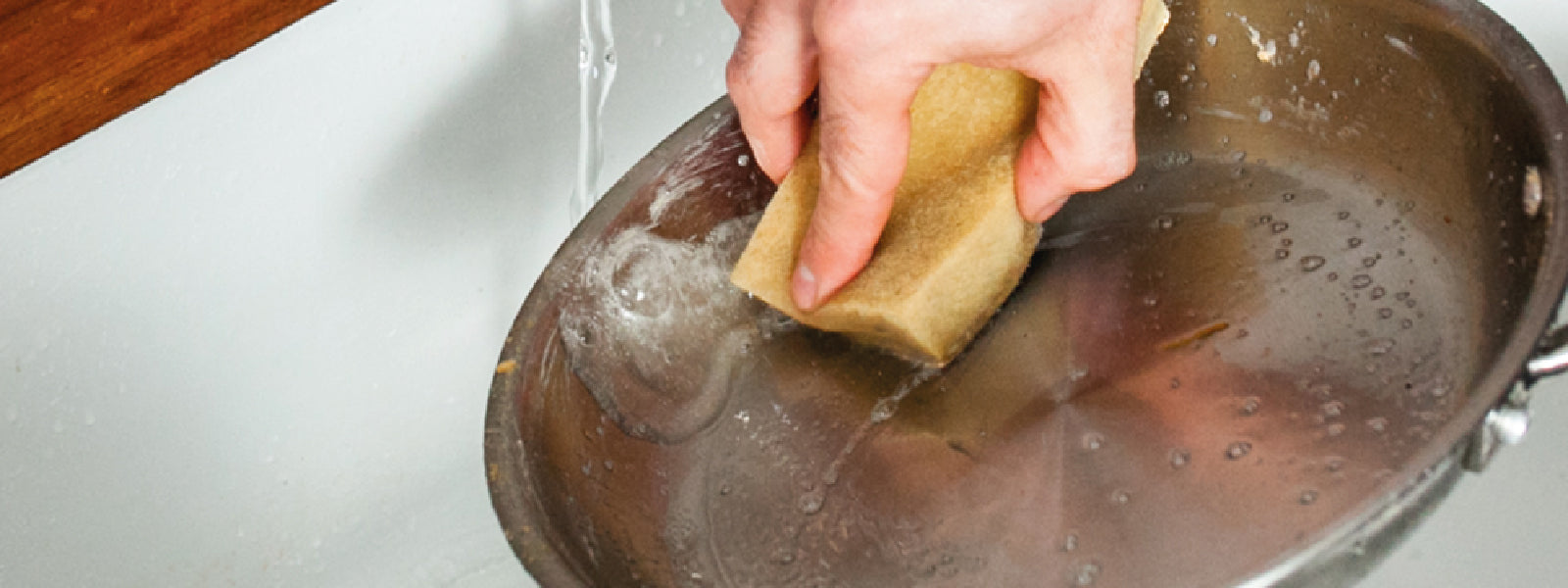
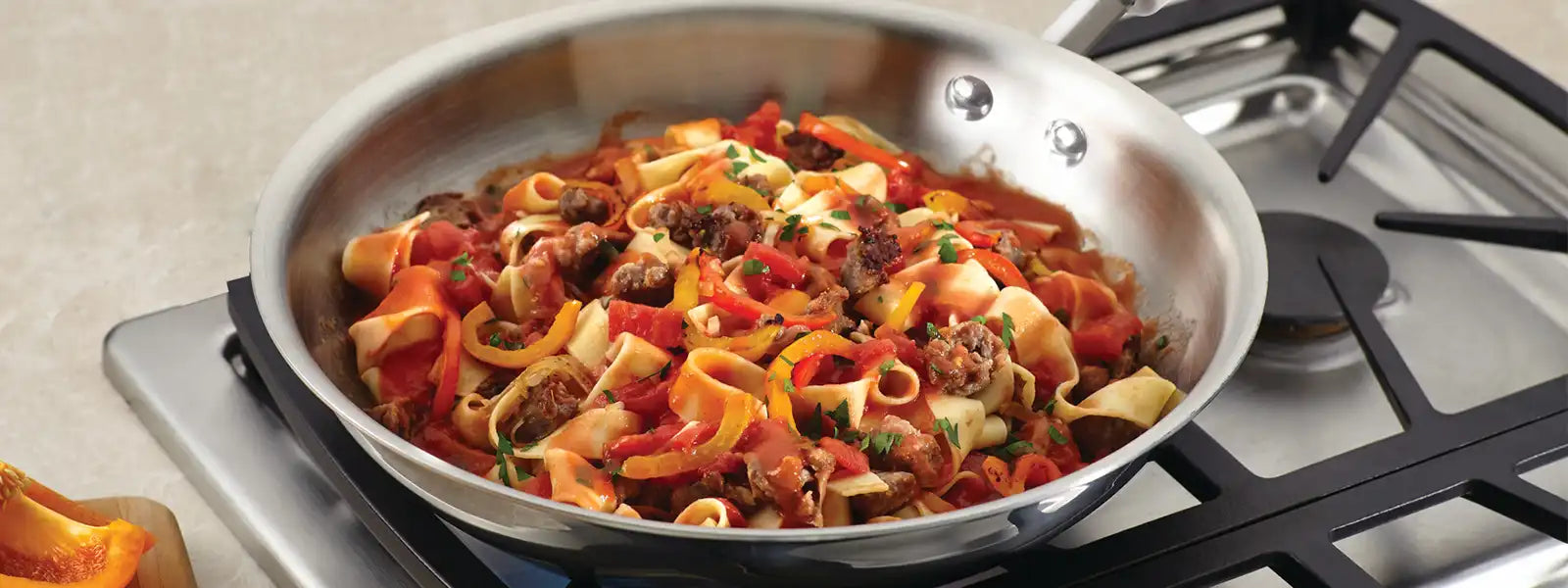
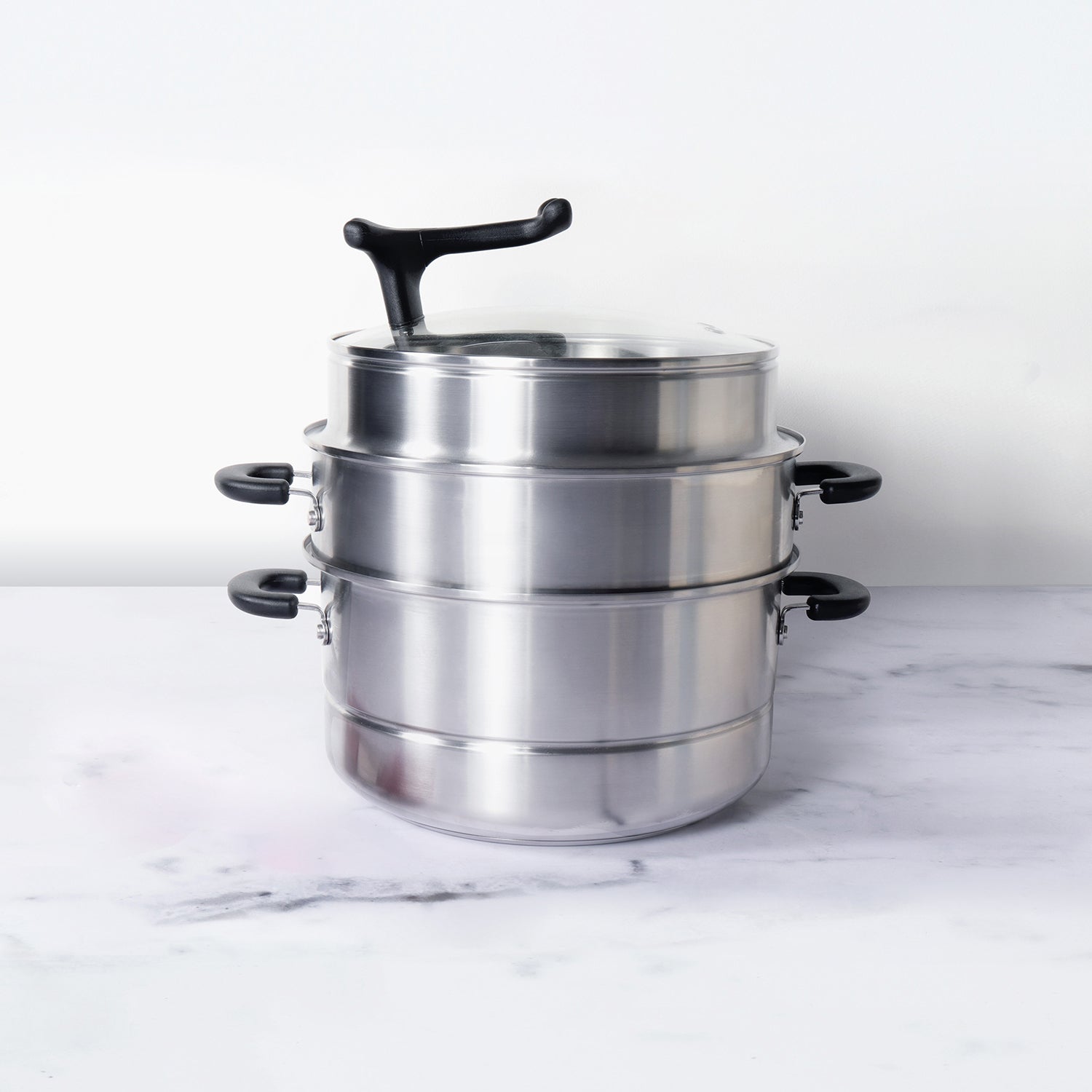
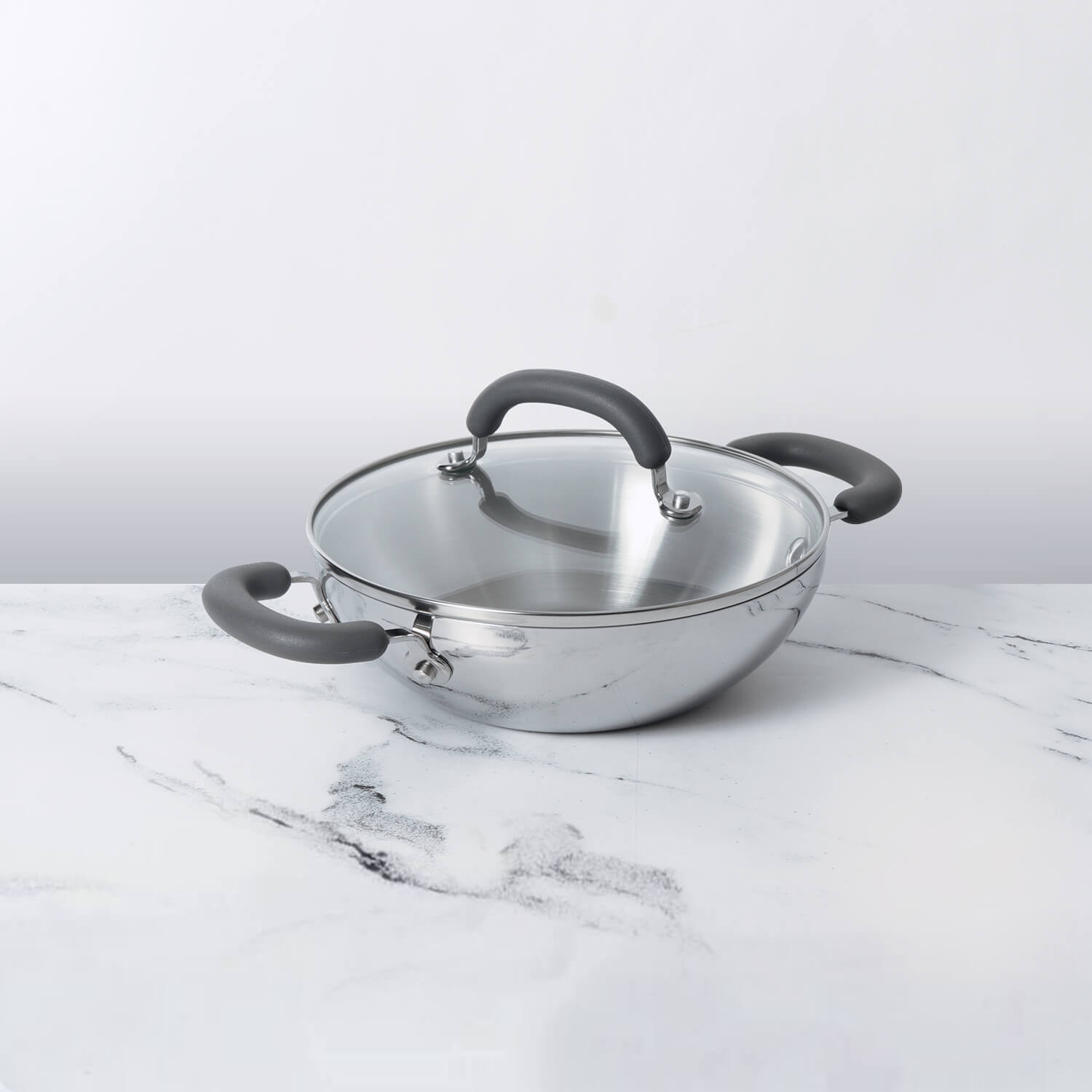




Leave a comment